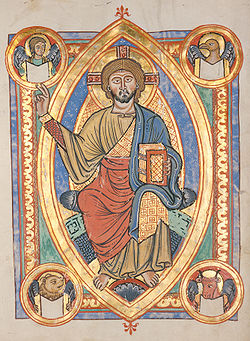| |
| Part of a series on |
| Devotions to Jesus in the Catholic Church |
|---|
 |
| Devotions |
| Prayers |
| |
This article needs additional citations for verification .(July 2022) |
The topic of this article may not meet Wikipedia's general notability guideline .(July 2022) |
The prayer before a crucifix is a Roman Catholic prayer to Jesus. It is often said by Roman Catholics after Communion or after Mass. The faithful receive a partial indulgence if they recite the prayer after Communion before a crucifix. On the Fridays of Lent, the indulgence is a plenary indulgence. [1]

